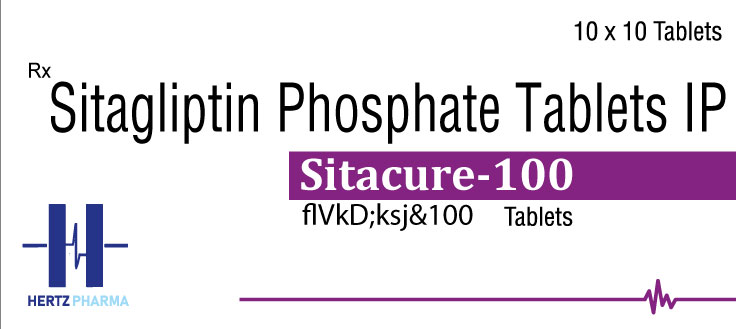
SEO For Financial Services Companies
Search engines have spent the last several years shifting from pure link-and-keyword signals toward more nuanced measures of content quality, user experience, and credibility. In 2025, SEO for financial services companies has become more challenging and competitive than ever, as algorithm updates now heavily reward demonstrable expertise, trust signals, real-world reputation, and excellent user experience. For banks, fintech firms, investment advisors, and other financial organizations, these updates have made it critical to focus on authoritative content, transparent sourcing, and seamless user journeys while avoiding thin, misleading, or manipulative tactics that could result in significant ranking drops.
Below I’ll walk you through the specific ways algorithm updates in 2025 affected financial SEO, practical changes to make, monitoring and recovery strategies, and a tactical checklist you can implement immediately.
1. Big-picture shifts search engines emphasized in 2025
Search engines (chiefly Google) continued to refine several interlocking priorities that together changed how finance sites rank:
- E-E-A-T and real-world reputation became front-and-center. Experience, Expertise, Authoritativeness, Trustworthiness (E-E-A-T) evolved from a soft guideline into a measurable ranking expectation for YMYL pages. Algorithms increasingly rewarded content written or reviewed by verifiable experts and penalized anonymous or poorly vetted content.
- User intent and outcomes over keyword matching. Updates improved intent understanding so pages demonstrating better user outcomes (longer task completion, lower bounce for a transactional intent) outranked keyword-optimized but unhelpful pages.
- Quality of information, not just freshness. While freshness matters for news and market data, algorithmic emphasis shifted to depth, provenance, and clarity — especially for explainers, product comparisons, and advice pages.
- AI signal handling and content provenance. As AI-generated content proliferated, search engines focused on whether content delivered factual, sourced, and accountable information. Signals for human oversight, clear authorship, and primary-source citations were favored.
- Stricter scrutiny for YMYL. Updates tightened the threshold of acceptable content for financial advice or product pages. Thin pages, vague disclaimers, and unverifiable claims faced ranking drops.
- Continued technical UX requirements. Core Web Vitals and mobile-first experience still mattered; pages that loaded quickly, were stable, and offered clean mobile flows had a ranking edge.
These trends together made 2025 a year where credibility and user outcomes mattered more than ever for financial SEO.
2. Why finance sites are uniquely vulnerable (and how updates exploited those weaknesses)
Financial sites are targeted by algorithm changes for three reasons:
- High-stakes content. Bad financial guidance can cause real losses. Search engines apply conservative, high-evidence ranking standards.
- Complex competitive landscape. Incumbent banks, fintech startups, review publishers, and affiliate sites all compete — many rely on scale rather than quality.
- Abuse vectors. Affiliate marketing, thin product pages designed to collect leads, and churn of AI-generated “how-to” content offered many low-value pages that updates could easily demote.
The 2025 updates exposed these weak points. Specific behaviors that triggered downgrades included:
- Anonymous or uncredited financial advice. Pages offering investment or tax advice without named, credentialed authors or a clear review process lost visibility.
- Thin affiliate pages or doorway pages. Content that existed solely to route users to partners (with minimal original value) got filtered out.
- Outdated or unsourced claims. Financial guidance lacking citations to primary sources (regulators, prospectuses, official docs) suffered.
- Poor conversion funnels. Sites with confusing navigation, slow mobile pages, or interstitials that interrupted task completion saw lower ranking signals.
- Mismatched intent. Example: a blog article optimized for “best mutual funds” that offered only promotional snippets performed worse than a thorough comparison that helped users choose.
3. Core signals that mattered most in 2025 (and what to optimize)
Below are the principal ranking signals and how to act on each.
A. E-E-A-T (Experience, Expertise, Authoritativeness, Trustworthiness)
What changed: Algorithms more heavily weighed verifiable author credentials, editorial review, and business reputation. Signals like author bios with credentials, evidence of editorial processes, and third-party reputation (press, regulatory listings, reviews) were strong positive factors.
Actions:
- Add detailed author bios that include credentials, certifications, and relevant experience for any page offering advice.
- Publish a clear editorial policy describing review processes for financial content.
- Obtain and surface third-party trust signals: regulatory registrations, awards, media mentions, and verified reviews.
B. Source quality & citations
What changed: Source provenance mattered. Citing primary sources (regulatory guidance, SEC filings, central bank data) and linking to primary documents improved rankings for advice and data pages.
Actions:
- Whenever you make a factual claim (rates, limits, regulatory rules), cite the underlying regulation or official document.
- Use structured data (FAQ, WebPage, Article with author) to highlight provenance and citations.
C. User intent and task completion
What changed: Search engines rewarded pages that satisfied the original user intent and measurable outcomes (e.g., users stayed to read comparisons and converted).
Actions:
- Map content to intent (informational, transactional, navigational) and design pages for the specific task — e.g., comparison tables for “best X,” calculators for “how much will X cost,” and clear application flows for “apply for Y.”
- Use analytics to measure session success metrics (time to conversion, pages per session for task completion).
D. Content depth & originality
What changed: Surface-level, generic content lost traction. Depth, unique analysis, original data or tools (calculators, interactive charts) were rewarded.
Actions:
- Create long-form cornerstone content for key topics with unique angles — e.g., case studies, proprietary research, interactive calculators.
- Avoid spinning or repurposing press releases as standalone content.
E. Technical performance & Core Web Vitals
What changed: Speed, stability, and mobile usability continued to be necessary. However, in 2025 they functioned as hygiene factors — poor scores could block ranking gains even if content was excellent.
Actions:
- Optimize Largest Contentful Paint (LCP), Cumulative Layout Shift (CLS), and Interaction to Next Paint (INP) on critical pages (landing pages, calculators, application pages).
- Test on real mobile devices and implement server-side performance improvements, image optimization, and critical CSS delivery.
F. Spam & manipulative links
What changed: Link spam and manipulative practices were identified more reliably. Sites with unnatural link patterns risked manual or algorithmic penalties.
Actions:
- Audit backlink profiles and disavow toxic links only when necessary; prioritize earning genuine editorial links.
- Avoid large-scale paid link schemes and low-quality directories.
G. AI content and human oversight
What changed: Search engines distinguished between useful AI-assisted content and low-effort AI mass production. Signals of human editing and accountability were beneficial.
Actions:
- If using AI to draft content, include human editor notes, review cycles, and named authorship.
- Prefer transparent statements about content sources and editorial review.
4. Practical 2025 SEO playbook for financial companies
Below is a prioritized tactical plan you can implement in the short and medium term.
Priority 1 — Content & credibility (0–3 months)
- Authoritativeness: Add author bios to every advice, product, or advisor page. Include licensing numbers, certifications, years of experience, and a short CV or LinkedIn link.
- Editorial policy: Publish a visible editorial review policy and date stamps for content review. Create an internal review schedule for all YMYL pages.
- Primary sourcing: For any stat or legal guidance, link to primary sources (regulators, official filings) and keep an internal citation log.
- Case studies & data: Publish proprietary case studies or aggregated data to differentiate your content from competitors.
Priority 2 — UX & trust signals (1–4 months)
- On-page trust elements: Display regulatory badges, security seals, privacy policy links, and contact information prominently.
- Simplify funnels: Ensure sign-up and application flows are mobile-first, require the fewest fields possible, and show progress indicators.
- Speed & Core Web Vitals: Prioritize fixing LCP and CLS on high-traffic conversion pages.
Priority 3 — Architecture & technical SEO (2–6 months)
- Content pruning: Identify thin or low-performing affiliate pages; either improve them into valuable resources or deindex them.
- Structured data: Implement appropriate schema (Article, FAQ, HowTo, Product) and ensure it’s accurate.
- Canonicalization & pagination: Confirm canonical tags are correct, especially for product lists and comparison pages.
Priority 4 — Backlinks & reputation (3–9 months)
- Link acquisition strategy: Focus on earning links from reputable finance publishers, mainstream press, and industry associations.
- Public relations: Use PR to highlight thought leadership (reports, expert commentary) — this builds both backlinks and brand reputation.
- Review management: Encourage and respond to verified reviews (Google Business Profile, Trustpilot) and resolve complaints promptly.
Priority 5 — Monitoring & rapid response (ongoing)
- SERP monitoring: Track ranking volatility for main keywords and watch impressions/click-throughs in Search Console.
- Traffic attribution: Use segmented analytics to separate organic traffic for YMYL content and measure task completion metrics.
- Update cadence: Create a review cadence for high-value pages (quarterly or when laws/regulations change).
5. Example page-level changes that improve rankings (concrete examples)
- Transform a shallow “best credit cards” post
- Before: 700 words, short bullet points, affiliate links, no author or update date.
- After: 2,500 words with comparison matrix, APR and rewards tables updated to primary-source links, author with finance credentials, methodology section explaining ranking criteria, E-E-A-T signals (editorial review note), structured FAQ, and an interactive calculator for potential rewards.
- Result: improved time-on-page, lower bounce for comparison intent, and better rankings.
- Improve a “how to file tax form X” article
- Before: descriptive steps copied from secondary sources.
- After: step-by-step guide with screenshots, links to the official tax agency, a downloadable checklist, and a dated revision history.
- Result: recognized as a higher-quality resource and lifted in visibility for informational queries.
- Secure and streamline loan application flow
- Before: slow landing page, heavy scripts, confusing trust cues.
- After: optimized assets for faster LCP, visible security badges, clear CTA, and a one-page application with progress bars.
- Result: increased conversions and better UX metrics that correlate with improved search signals.
6. Monitoring, KPIs and what to watch after an update
When an algorithm update hits, act quickly and methodically. Track these KPIs:
- Organic impressions & clicks (Search Console): Sudden drops/increases can indicate ranking changes.
- Top keyword rank changes: Monitor both position and SERP features lost/gained.
- User behavior metrics (Analytics): Bounce rate, session duration, pages per session, conversion rate — especially for intent-specific pages.
- Core Web Vitals: LCP, CLS, INP changes on high-traffic pages.
- Index coverage & crawl errors: Look for spikes after updates that might indicate crawling/technical issues.
- Backlink profile anomalies: Sudden loss or gain of links may correlate with ranking shifts.
Immediate triage steps after a drop:
- Check if affected pages are YMYL and whether they lack authorship or primary sources.
- Look for recent content that may have been manually actioned (Search Console messages).
- Audit page-level E-E-A-T signals (author, credentials, review notes).
- Compare competing pages: are they providing deeper sourcing, better UX, or new data?
- Fix UX/technical issues (speed, mobile) that can block recovery even after content fixes.
7. Recovery roadmap: what to do if you’re hit
If your financial site loses traffic after an update, follow this sequence:
- Diagnose scope: Identify which pages lost traffic, and whether the drop is across the site or isolated to YMYL content.
- Quality audit: For each affected page, ask — does this page demonstrate expertise? Are claims sourced? Is the author credible? Is this content original and useful?
- Content remediation: Rework thin pages into comprehensive resources, add author verification and editorial notes, and add citations to authoritative sources.
- Technical clean-up: Fix Core Web Vitals, mobile usability, or indexability issues that may be compounding the drop.
- Reinforce reputation: Acquire legitimate press mentions, industry references, and authoritative backlinks.
- Submit for re-evaluation (if manual action): If Search Console shows a manual action, follow the instructions and submit a reconsideration request.
- Document changes & monitor: Keep a changelog and monitor Search Console and analytics for recovery signals.
Recovery is more about demonstrating sustained improvement (editorial processes, documentation, external trust) than quick technical tweaks alone.8=
8. Content strategy examples that work in 2025
Financial companies that outperformed in 2025 typically used a combination of the following content types:
- Proprietary research and reports. Publish original surveys, benchmarks, or data visualizations and gate them for lead capture. These earn press links and establish authority.
- Interactive calculators & tools. Tools that solve specific finance tasks (mortgage calculators, retirement simulators) create durable engagement signals and page value.
- Regulatory explainers with primary sources. Summaries of law changes linking to the regulator’s site, with practical implications and examples.
- Expert Q&A / video explainers. Short expert videos or transcripts with author attribution and commentary by credentialed staff.
- Long-form comparison guides. Deep examinations of product differences with methodology and data transparency.
9. SEO governance & org changes to survive future updates
Search is now partly an editorial problem. For long-term resilience:
10. 20 things to do this quarter (prioritized)
- Add or update author bios on all advice pages.
- Publish an editorial policy and visible content review process.
- Audit and improve top 100 traffic-driving YMYL pages for sourcing and depth.
- Implement structured data (Article, FAQ, HowTo, Product) where relevant.
- Optimize Core Web Vitals for high-value pages.
- Convert thin affiliate pages to genuine comparison resources or deindex them.
- Add primary-source links for every factual claim.
- Add an internal changelog/revision date visible on pages.
- Create 2 proprietary reports or data-driven pieces to earn links.
- Deploy calculators or interactive tools for key user tasks.
- Review backlink profile and disavow spammy links if present.
- Improve mobile conversion funnels and reduce friction.
- Add visible regulatory and security trust signals.
- Start a PR cadence for thought leadership content.
- Integrate compliance review into publishing workflow.
- Monitor Search Console and rank trackers for sudden changes.
- Run competitor analysis on SERP winners for target keywords.
- Implement author verification (LinkedIn or professional profiles).
- Build an internal taxonomy mapping content to user intent.
- Train content team on AI-assistance best practices and transparency.
11. Common myths and pitfalls
Myth: “If I publish more content, I’ll recover.”
Reality: Quantity without demonstrable value can make things worse. Focus on quality and unique value.
Myth: “AI-written content will rank if long enough.”
Reality: AI is a drafting tool — but without expert vetting, sourcing, and accountability, AI content risks demotion.
Myth: “Backlinks are dead.”
Reality: High-quality editorial backlinks matter more than ever. Avoid schemes; earn them with unique research and PR.
12. A short hypothetical case study (compact)
Company: Mid-sized mortgage fintech with a content-driven growth strategy.
Problem: After a 2025 algorithm update, organic traffic to their mortgage comparison pages dropped 35%.
Diagnosis & actions:
- Found that competitor pages had updated APR tables linking to primary lenders and included author credentials. The fintech’s pages were thin and relied on syndicated data.
- Actions: rewrote comparison pages adding methodology, linked APRs to lender disclosures, published author bios for all product pages, added a mortgage affordability calculator, and improved mobile LCP.
Result (3 months): User engagement metrics improved; rankings for target keywords recovered and then increased, with traffic surpassing pre-update levels within five months.
Strategic mindset for 2025 and beyond
Algorithm updates in 2025 didn’t introduce a single new magical ranking factor — they reinforced a simple truth: search engines reward genuinely useful, credible, and well-engineered experiences. For financial companies, that means blending editorial rigor, transparent provenance, technical excellence, and user-first product experiences.
Short-term: fix critical E-E-A-T gaps, improve page experience, and remove thin content.
Medium-term: invest in proprietary data, tools, and PR to build real-world authority.
Long-term: bake SEO into governance — make credibility, review processes, and compliance foundational to how you publish.
If you start by asking “Does this page materially help a real user make a safe, informed financial decision?” and design everything around that question (content, UX, proof), you’ll be positioned not just to survive future updates — but to win.
Important Points
- Financial (YMYL) sites face stricter algorithm scrutiny; E-E-A-T and verifiable sourcing are crucial.
- AI content must be supervised and published with clear authorship and review.
- Core Web Vitals and mobile UX are hygiene factors — poor performance blocks ranking potential.
- Thin affiliate or doorway pages are high-risk; replace or deindex them.
- Monitor Search Console and behavior metrics closely after updates; prioritize fixing credibility and UX issues first.
Conclusion
Algorithm changes in 2025 continued a longer-term transition in search: away from gaming signals and toward measuring real-world value and trust. For financial companies, that means a shift from short-term traffic hacks to long-term investments in expertise, provenance, UX, and measurable outcomes. The organizations that embed rigorous editorial standards, create unique useful tools and data, and optimize the holistic user experience will not only recover from updates — they will build durable organic channels that withstand future changes.





